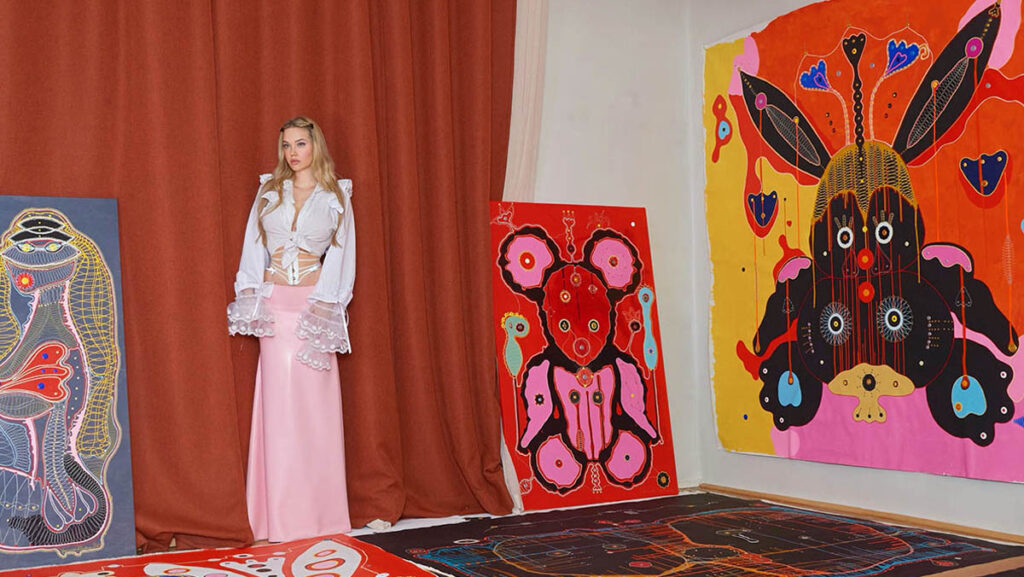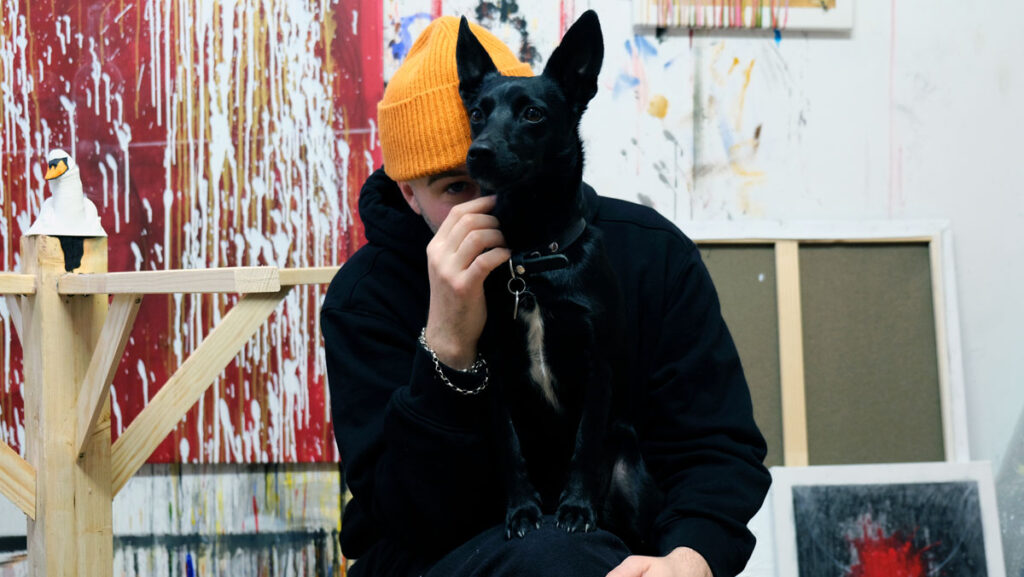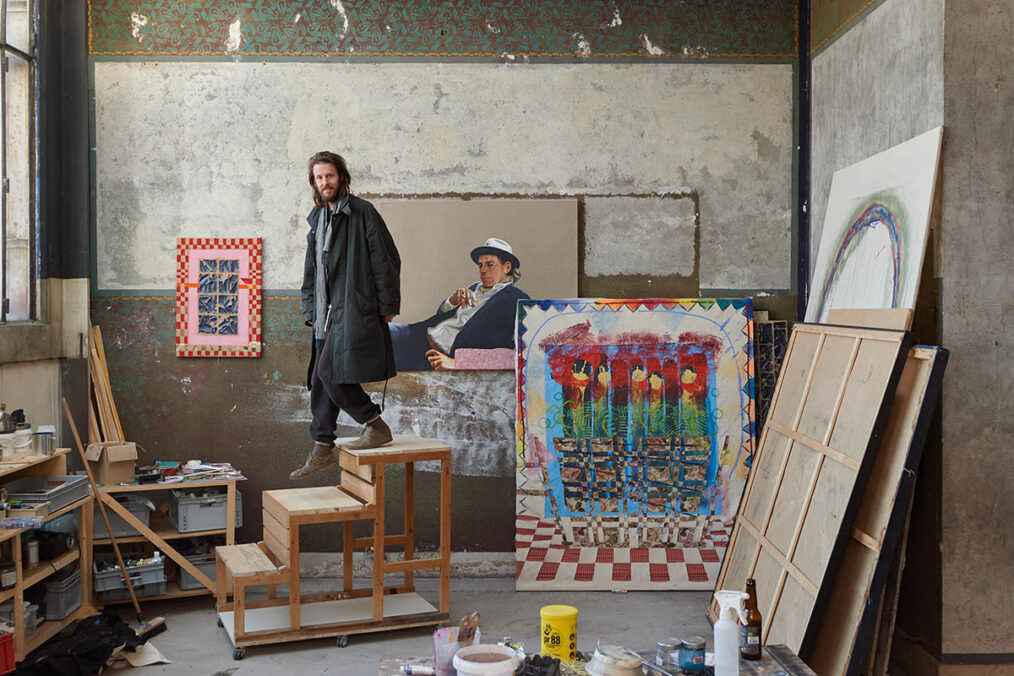
You are a self-taught artist; could you please share how you decided to pursue a career as an artist?
Being a painter was the first thing I ever wanted to be. From the very beginning, I had a real fascination for painting. Where I am coming from, being an artist was nothing I thought possible. I grew up in a working-class environment; it wasn’t an easy journey to reach the point where I am today. An important inflection point for me was when I saw Gerhard Richter’s abstract paintings in the Haus der Kunst Munich in 2009; I got intrigued. Back home, for the first time, I saw oil paints as a material to be used extensively instead of saving them as something precious. My first atelier was in the 17th district of Vienna. At first, there was just one room in the basement of the house I lived in with friends. Soon, there will be two rooms. From there, things just kept growing.
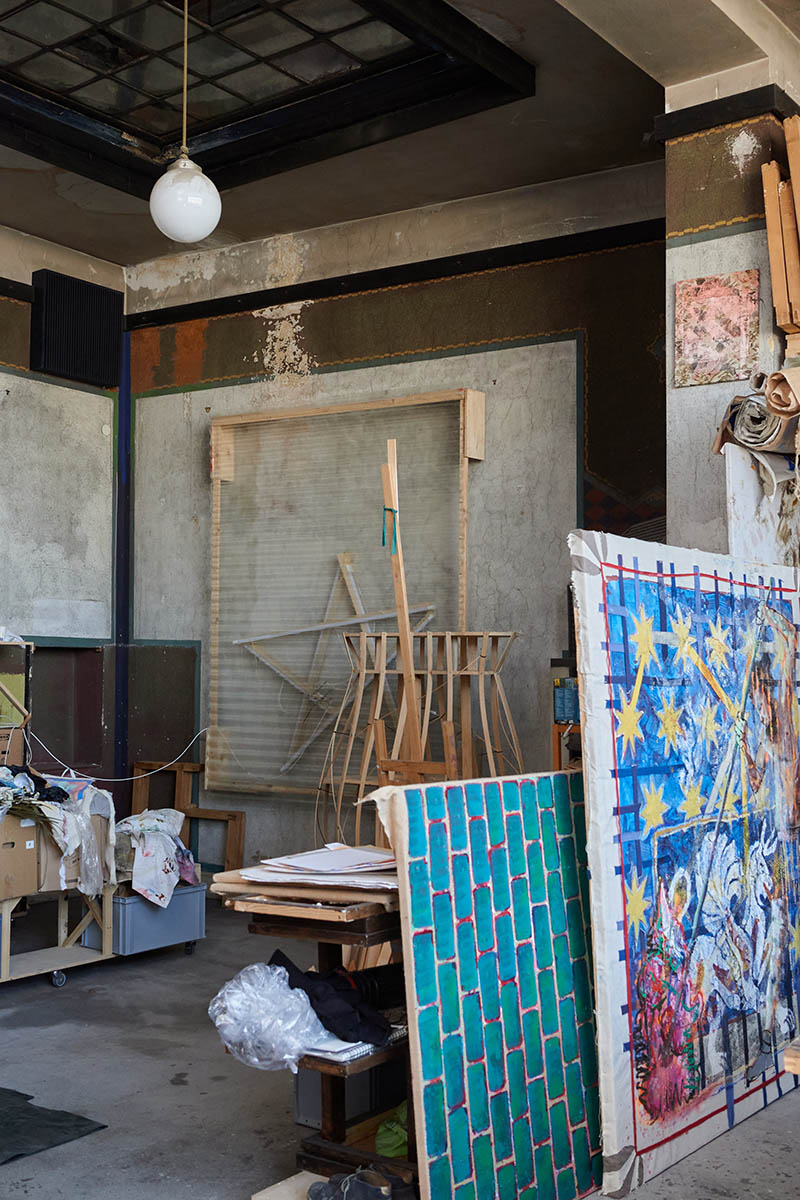
How important is the space where you are working to your practice?
My workspace has always been important to me. I have always been on the lookout for interesting rooms, and I still am. I have been in basements, smaller industrial production sites, a former ballroom, and an empty hotel. I am so glad to have found this one now. It was originally built as a studio; that’s new. For me, it is important to have a good space where I am working but also where I can invite and have people around.
If you need to imagine a perfect setting—room or outside—where your work will be, how will that setting look?
I found the perfect setting for work to be incredible rooms and amazing spaces, but the setting is a bit more than that; I consider the mindset to be part of the setting as well. It is space and time and some material, and the rest is going to happen once in the right mood. I will figure something out. Recently, I have started working with assistants at least once a week. It’s great and highly appreciate the help I get from them, but it also makes a difference in how I approach things.
Tell us a little bit more about this studio we are at right now. How often are you here? Is there some music while you are working?
We are in a Jugendstil building; I think it was built in 1905. The Austrian painter Leopold Blauensteiner lived and worked here until he died in 1947. One can feel that it is a place steeped in history. It is a built studio specifically for art making, and you can feel that the space is made to paint in it. For some work, silence is required; otherwise, it’s a mix of music and podcasts whenever I am working. My routine depends on how often I am here in the studio. I am traveling a lot, but when I am in town, I am in the studio every day.
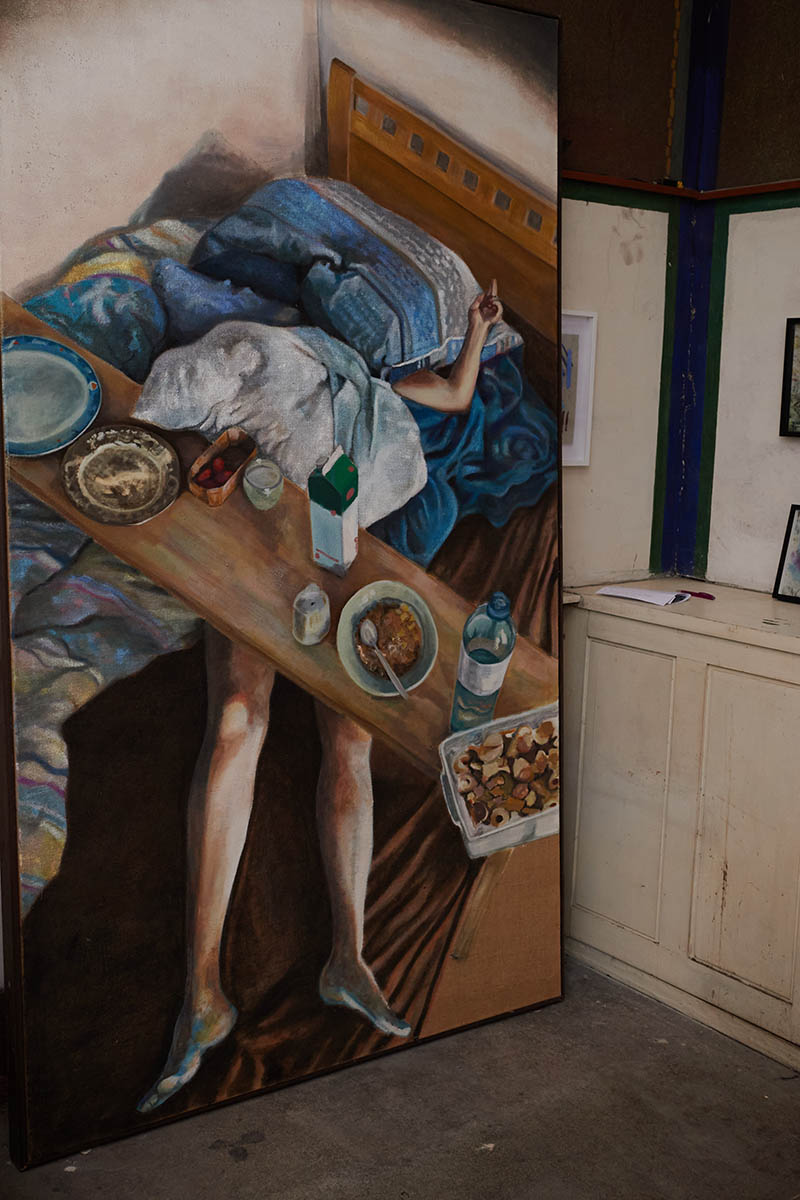
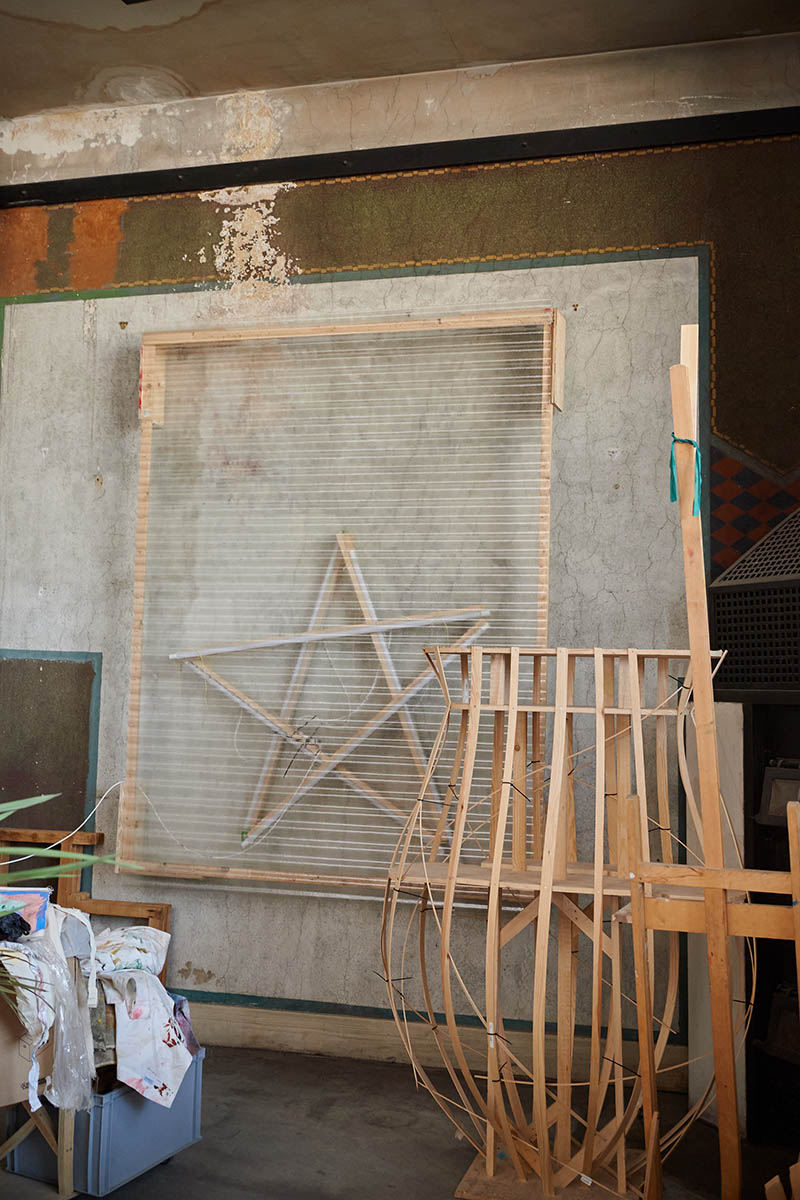
You’ve worked extensively across Europe, including countries like France, Italy, and Germany, alongside Austria. How have your experiences in these diverse locations influenced your artistic practice?
The most influential stay was back when I was 26. At that moment, after 5 years in Vienna, I needed some time to be alone with my work, so I moved to an empty hotel in Lipno, Czech Republic. And I stayed there for about 6 months in isolation. It was just me surrounded by materials, and I tried to figure out a new way of painting. I was completely alone in this huge space, but it was important, and looking back, I feel like I became a professional there. It takes a special dedication to do something like this. That was an interesting and important thing I needed to do and go through back then. I wouldn’t do it again, though, not like this; I got really lonely.
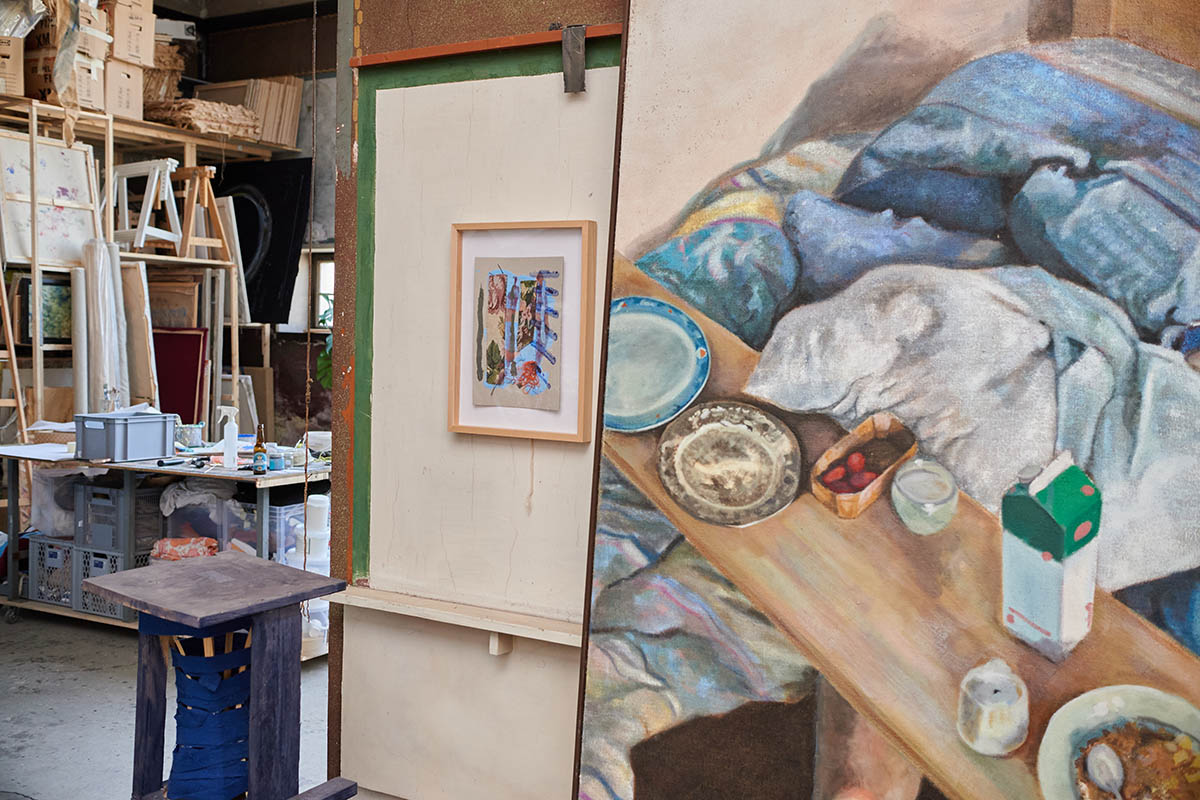
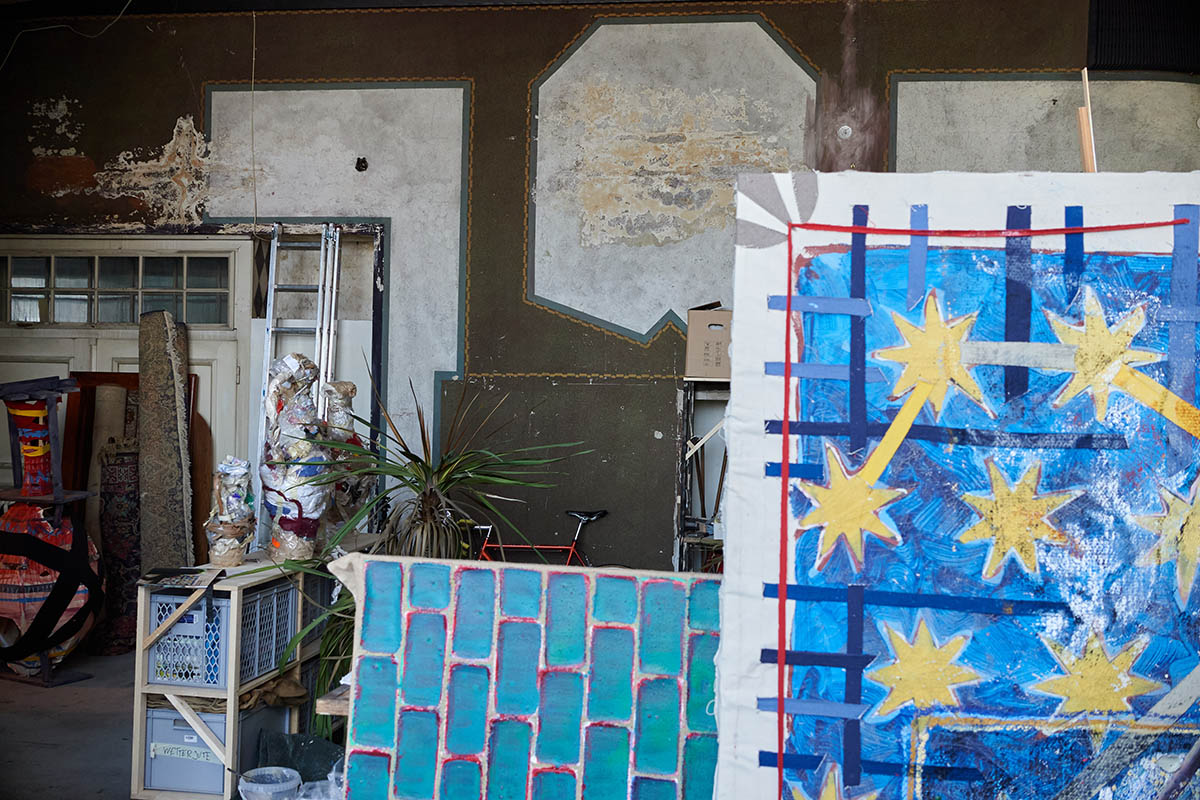
You spent quite some time in Waldviertel; how was this experience for you?
I spent some time in Altaussee Salzkammergut during the first lockdown due to COVID-19. When I returned to Vienna, I noticed significant changes. I thought that it wouldn’t be the city we’d enjoy for a long time and that city life wouldn’t be back to what it was for quite some time. So, I quickly found a forester’s house in the Waldviertel region, which I then rented and converted into my living space and studio. And I was happy to find the house there, where I could work and live; the 4 kilometers around it were just forest. I spent time there dedicated to painting, which was amazing, but once stuff started happening again in the cities, people started going to concerts again, and so on. It became lonely in the woods. After Lipno, that was the second time I felt isolated in my life, and so I went to Voralberg to do a residency at Hotel Hirschen Schwarzenberg to be with people again, where I spent at least 6 months.
About how the forest influenced me: I think I am longing for a certain way of thinking about how painting should be done for me. This is more or less a feeling I have. It is mostly that I implement certain things into a way of painting that I am bringing along already. The forester’s house was a quiet place with nature all over, and I found a settled way of doing things there. I draw more inspiration from art history than from my surroundings, I would say!
Are you collecting something? Books, for example?
I would not even say I collect books; I just can’t resist buying them. Talk about art books here. As I said, art history is very important to me. I have a lot of them, but I need them more to have them around as material. They are the same as buying the fabric or stretchers for my canvases. I need them for my work. But I started collecting art. I think earning from doing art and then buying art is something I enjoy. Most recently, I was able to purchase an amazing work by Eva Yurková, for example.
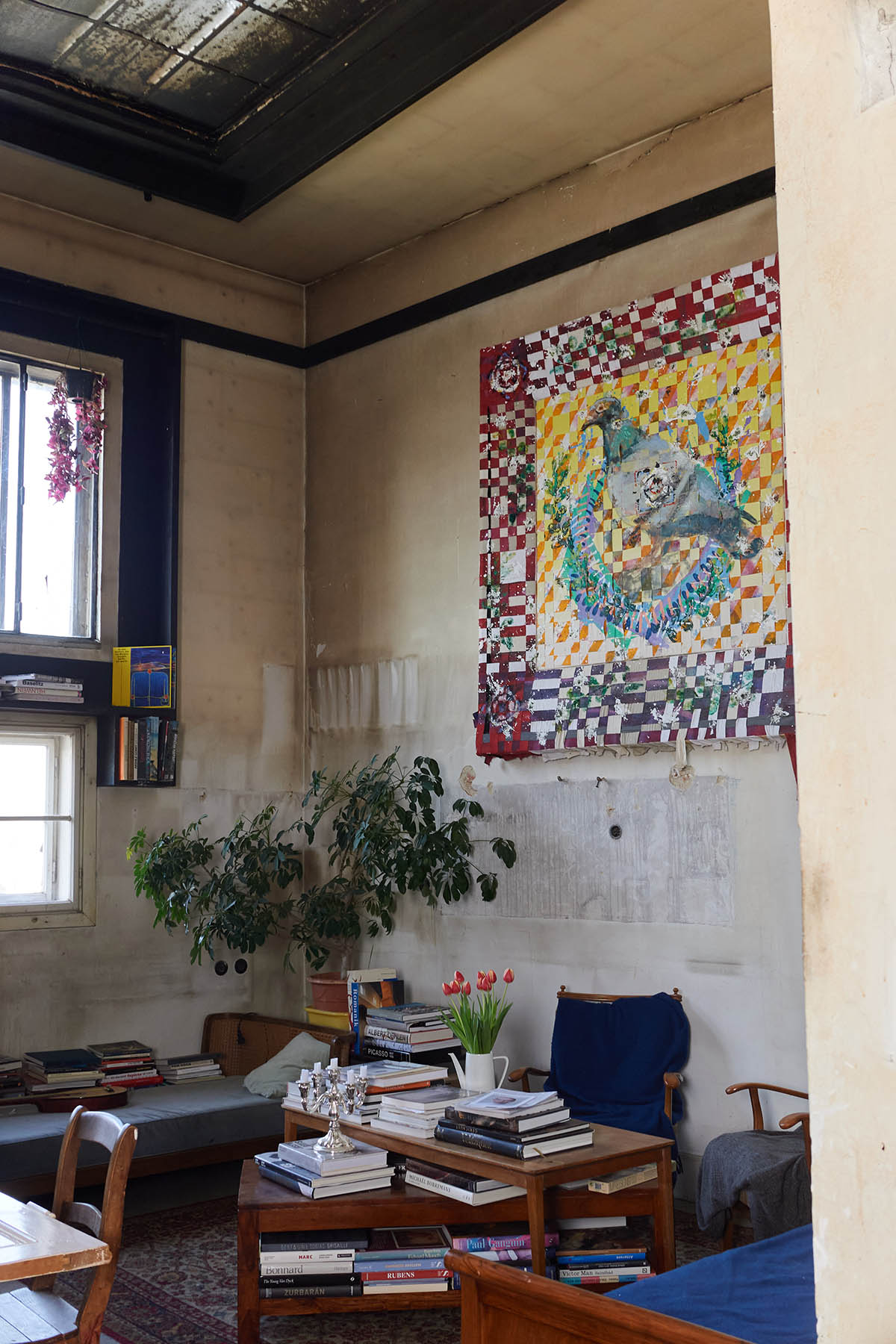
You recently made dinner at your studio; are you planning to extend that and do more events? Share with us a bit about your passion for cooking.
I realized that cooking for me is very similar to painting, with one big difference: it is a similar process of being creative and assembling certain things in a certain order and combining things for a special look or taste. But the big difference is that with painting, I do not feel like getting a reward for doing it; I always have to get myself to go on doing it and motivate myself. Once the painting is done, it becomes an object. I own an object in a way, and then I can sell objects I own, but it is not a reward for the work I have been doing.
With cooking, the response is more direct; you have the people’s reaction immediately, and that is why I like cooking a lot. I have always been selling my art on my own with my team, and back in the day, I needed to come up with special events and occasions to get people to my studio. Nowadays, they want to come, and I just have to organize that. Dinners are a fun way to do that. I am also planning on co-hosting events soon with others. There are some people, like the art historian and curator Marija Nujic as well as the „Tausendsasser“ Cornelius Klimt, with whom I will work on organizing some things together.
As a consumer, I was introduced to very advanced ways of cooking as a special treat while doing Art Residencies at places like Seehof Goldegg, back then under Sepp Schellhorn, now run by his son Felix, or at Peter Fetz´s Hirschen in Schwarzenberg. I got a lot of inspiration from cooking there.
You are running marathons; have you found this need for doing something „extreme,“ which is also connected to the way you approach objects you are making and their scale?
I think it is also a question of perception: is a marathon extreme? I guess for people who are not running, it is; for runners, it is not necessarily, because some do even crazier stuff. Running is easy for me, but it is the same as painting; it always felt easy. I was never able to, for example, learn how to play an instrument because I would have to practice. And I was never into practicing. I do train for marathons, though. In terms of the scale of the paintings and objects I make, they are always only as big as they need to be.
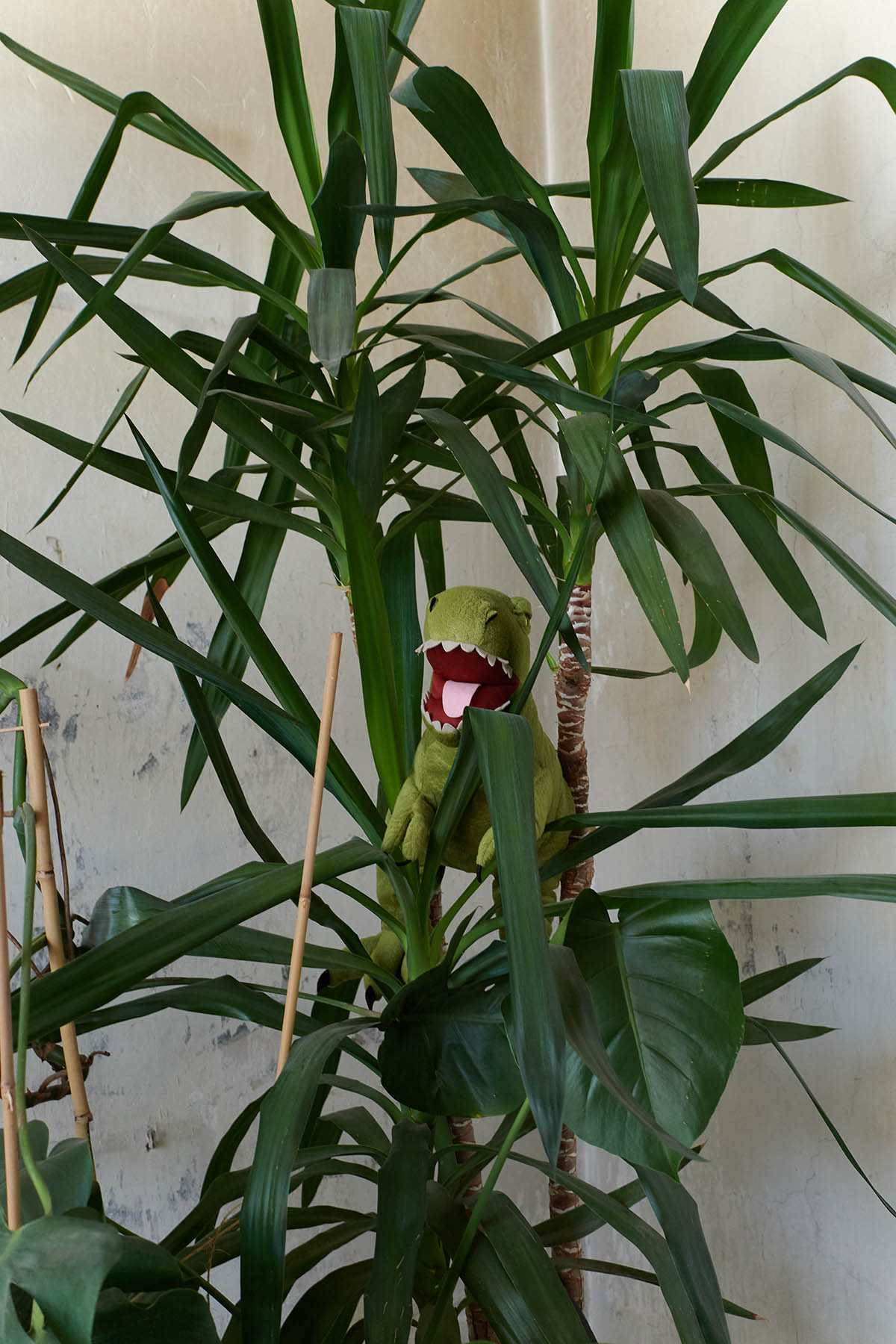
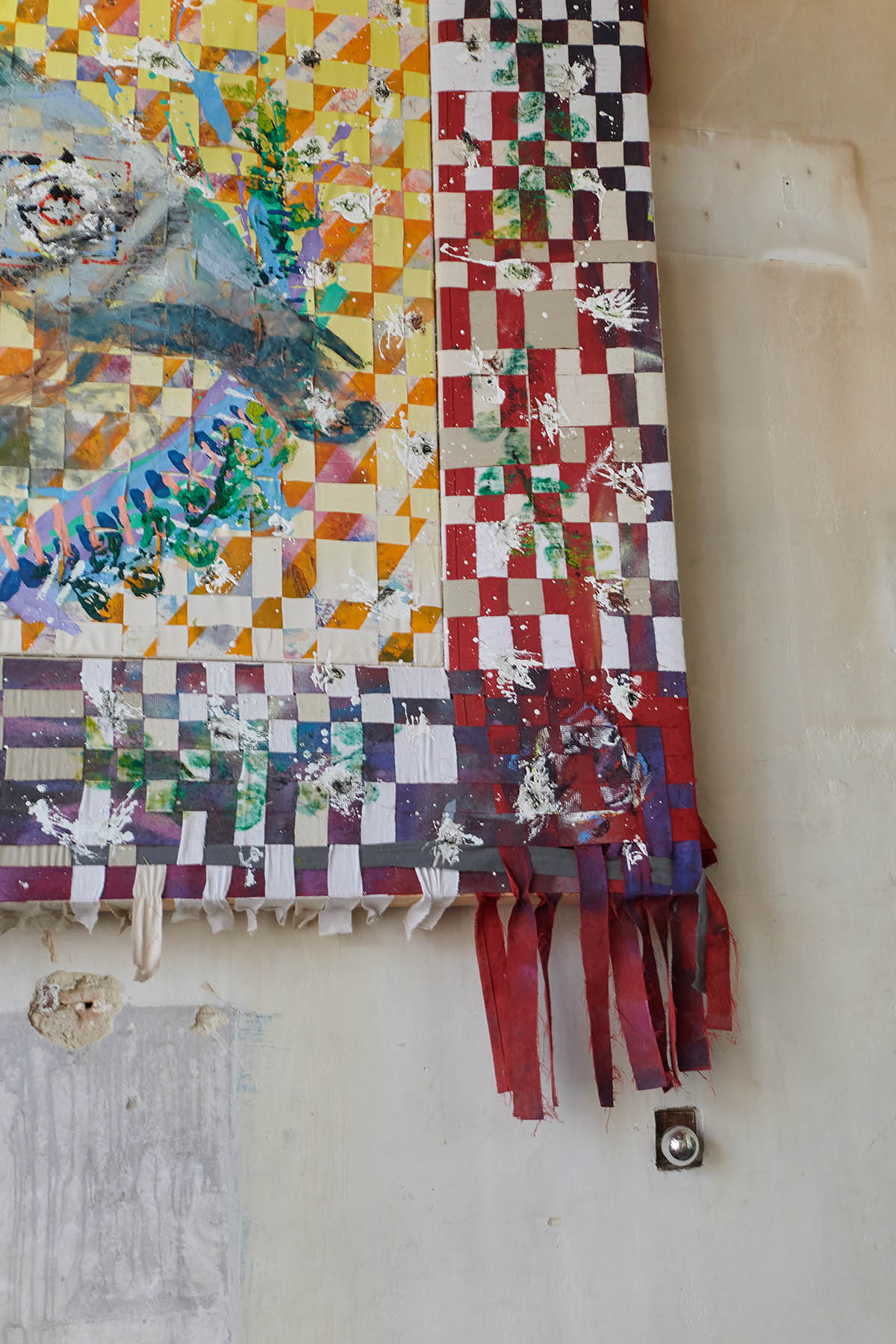
Your practice is very closely connected to action, with a focus on the process. Can you explain a bit more about it?
The most interesting thing for me is the material. I am interested in surfaces and using different materials to create structural experiences. I am also interested in things that are happening besides the actual effort of painting; for example, my series Abstrakte Fetzen is me cleaning my brushes while painting something else. I am also interested in the side products of producing art. I try to use everything and not produce any trash, and I have figured out ways of doing it. The art production I am doing is close to zero waste. It seems to me that’s one way of being contemporary.
How do you know it is time to do something? Do you feel it, and how did you start?
I mean, there are always ideas! But not all of them are good; very often it is just me getting hyped about something, and after a little cool down, I am more like, Yeah, well, no, let´s better not do that! But some things are holding up, so I try them. Very often, it is the handling of the material itself that sparks a new idea. But I am not doing anything if I am not completely convinced that this is going to be good. Later on, I might decide otherwise, but at the moment of creation, I want to feel that conviction of doing something good. I think Gerhard Richter once said he always had the feeling he was allowed to do what he was doing. I think this is what he meant. Julian Schnabl said he wants to paint something he hasn’t seen yet. I can relate to these approaches. So I guess what I am trying to say is that I have learned that for me, being an artist means having a system in place that makes me able to do it, and once there is this certain idea, I can’t hold back anyway.
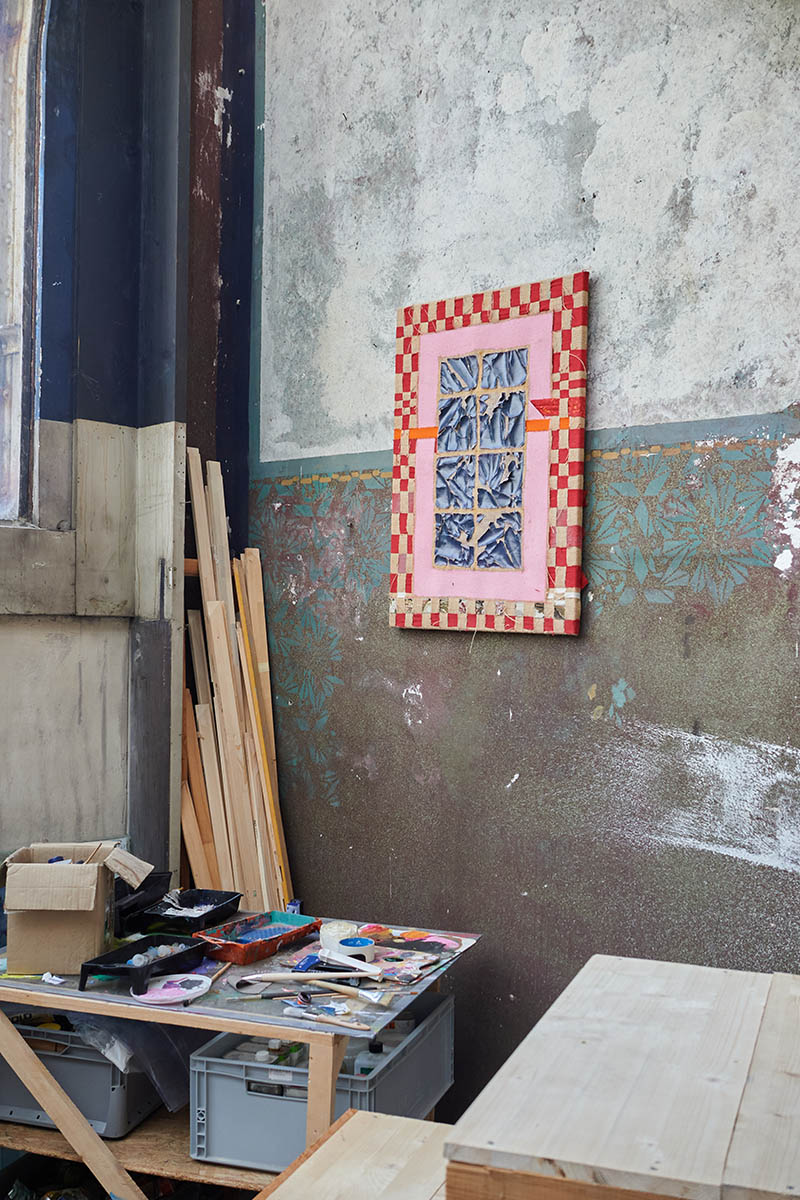
Are you producing a lot, or do you need time in between works?
I do have phases, I would say. I can go months without—well, I wouldn’t say without working, but definitely without painting. Once I find it, I go on as long as I can hold that certain focus that is required. Talking about a couple of weeks there, maybe 4 when it’s very short, about 10 when I have a good phase. But at some point, it feels like I start burning myself; this is not a sustainable way to go, so I let it go. I don’t know how many works I have produced at that point, but we are working on cataloging them all.
What was the last artwork you did? Painting or sculpture?
I tend to do more sculptures lately, but those are more prototypes I haven’t shown yet. By now, to even start painting, a lot of things have to be in place, and we have done great amounts of work on the studio in recent months. But it feels like I am finally there. I am about to start painting again. It’s exciting!
How important is the social aspect of your job, and is the constant need for building new contacts and expanding the network important for your career?
It is important. I am getting in touch with everyone; I am networking. That is why I travel. I just returned from Spain, and I am going to Venice in April and probably New York in May, so these are the things that I kind of have to do, which is not the worst thing of all, but it can be exhausting.
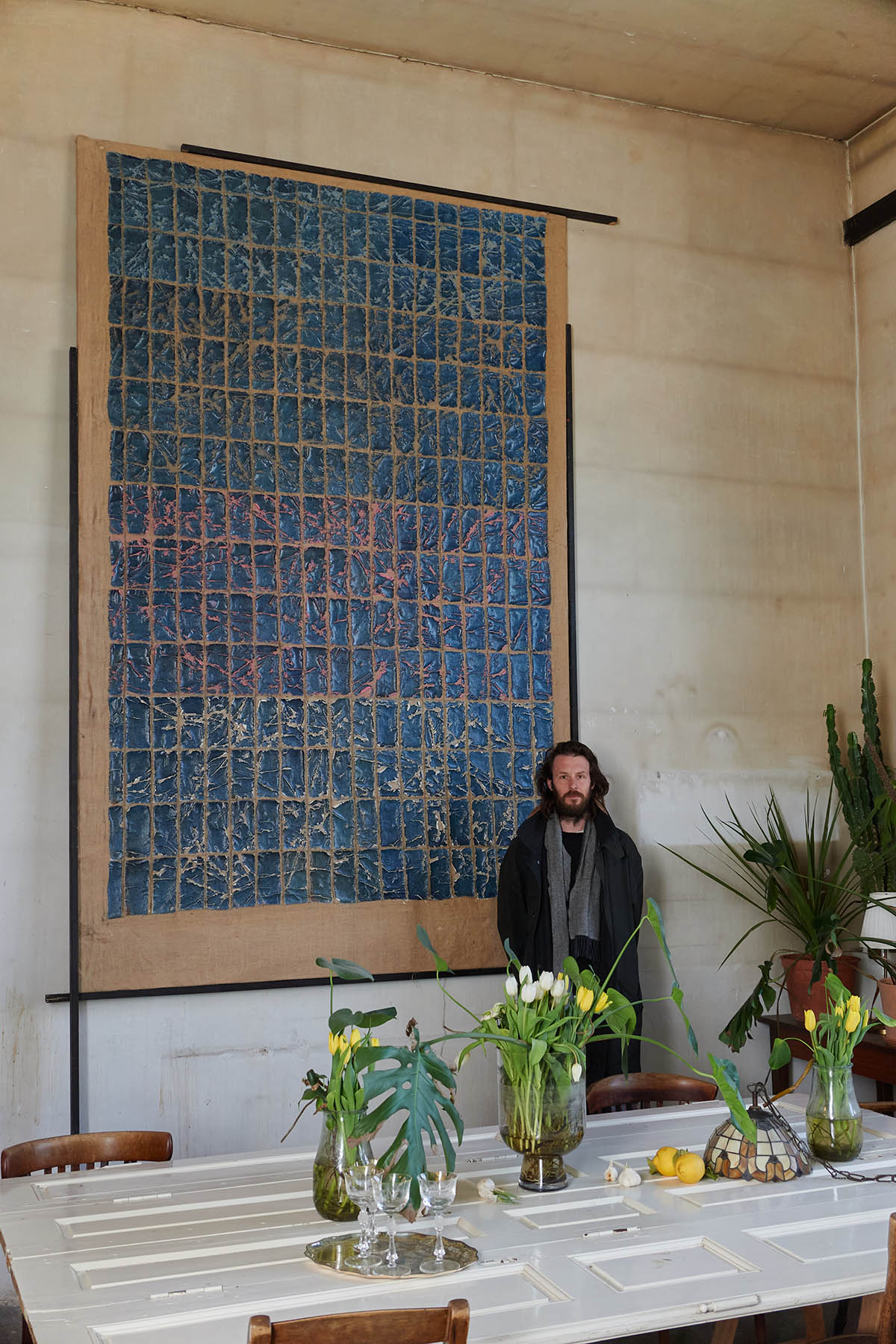
Your exhibition “CHURCH” in Donauhof, Vienna, 2023, is quite interesting. Can you explain the process behind it?
Last spring, thanks to my friend Cornelius Klimt, I had the opportunity to use Donauhof in a second district as a studio for a couple of months. I wanted to end my residence by doing an exhibition there, and the question was how to use the space in a way that made sense to me. My idea was to use church as a form. Whenever I am traveling, I visit churches as our cultural inheritance to see the similarities and differences. And I have seen everything in a church: old things next to new things, beautiful ancient art next to absolute kitsch, a vacuum cleaner standing randomly in it. My thinking was, once you can tell the form of a church, once you can get a feeling of being in a church, I can get away with everything. I can use new paintings—old paintings—and overload the whole place. That was my way of using this incredible space.
How do you navigate the balance between experimentation and refinement in your work?
There is not much difference for me. One is about material, decoding, priming, breaking up the surface, and making an interesting structure there, so it is a question of how to use a material. But with some others more figurative, I was looking for a way of how to do skin, for example, and I found a way of using wax as a skin layer, so there is an underpainting of a green-blue color, a layer of wax on it, and then half transparent skin tones onto that. So it’s a lot about the material and the experiment. It is always experimental in a way, but if it is a depiction of something you would consider concrete in a way, then the process is different because it always has to serve the purpose.
What are you currently working on?
Bringing people to this studio in Vienna, I guess, people have to see this! Also Teambuilding, there’s an inner circle of people I am working with who are doing necessary things for and with me. The next big thing is opening a studio at Campusvaere in Dornbirn (Spinnergasse 1, 6850 Dornbirn). There is a lot of interest in me and my work in that region, and I will have a studio there to invite people from Vorarlberg, Liechtenstein, and Switzerland. And I never had two studios at the same time. I am interested in this going back and forth; if this works, I can have my second studio anywhere, and right now it is going to be Vorarlberg. So Dornbirn is also kind of a test run in terms of splitting my studio because I have great people there to work with, like Bettina Steindl and Roland Adlassnigg. And there are also upcoming collaborations with other interesting people and projects that I don’t want to reveal yet.
Thomas Schrenk – www.thomasschrenk.com, www.instagram.com/thomasschrenk/




